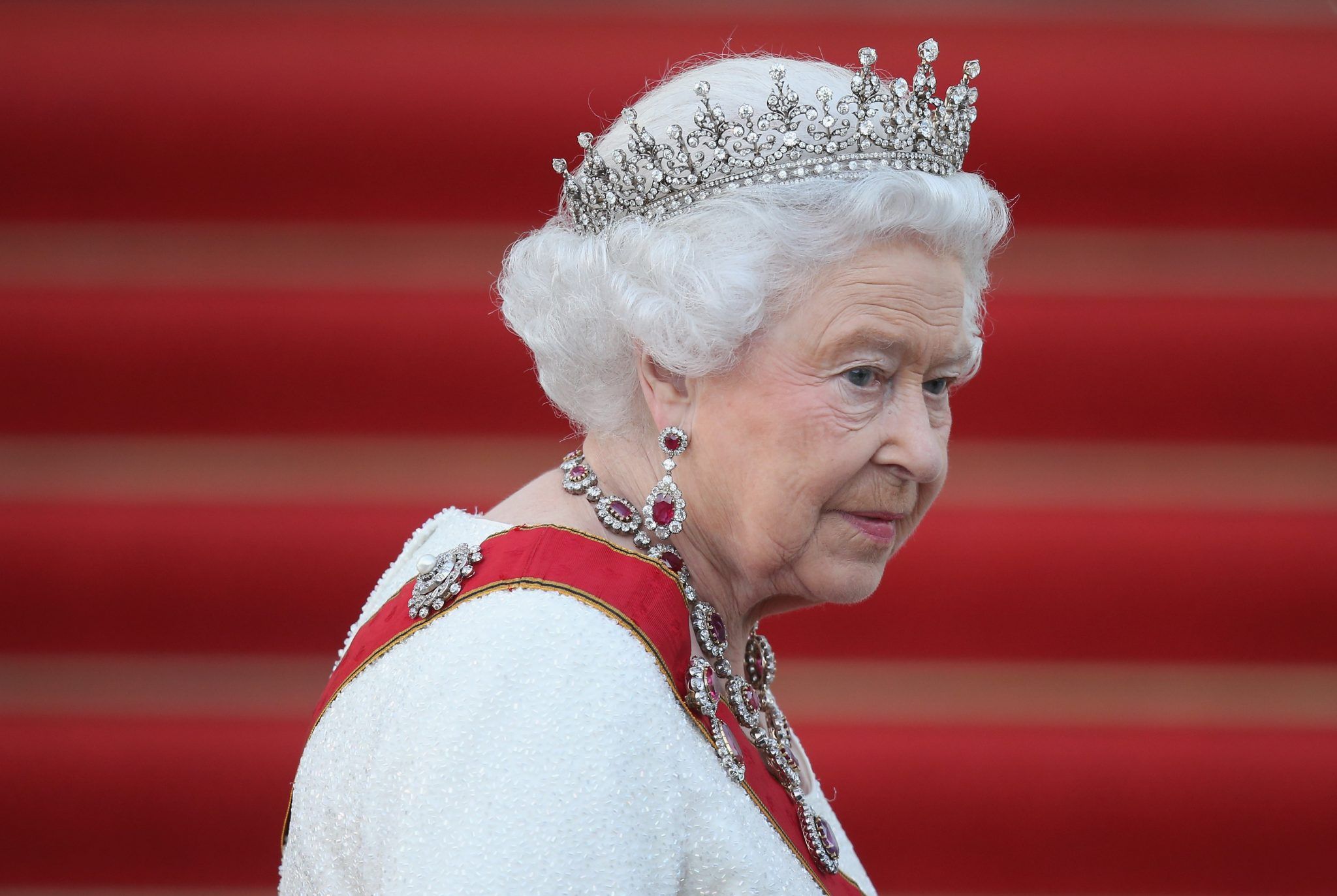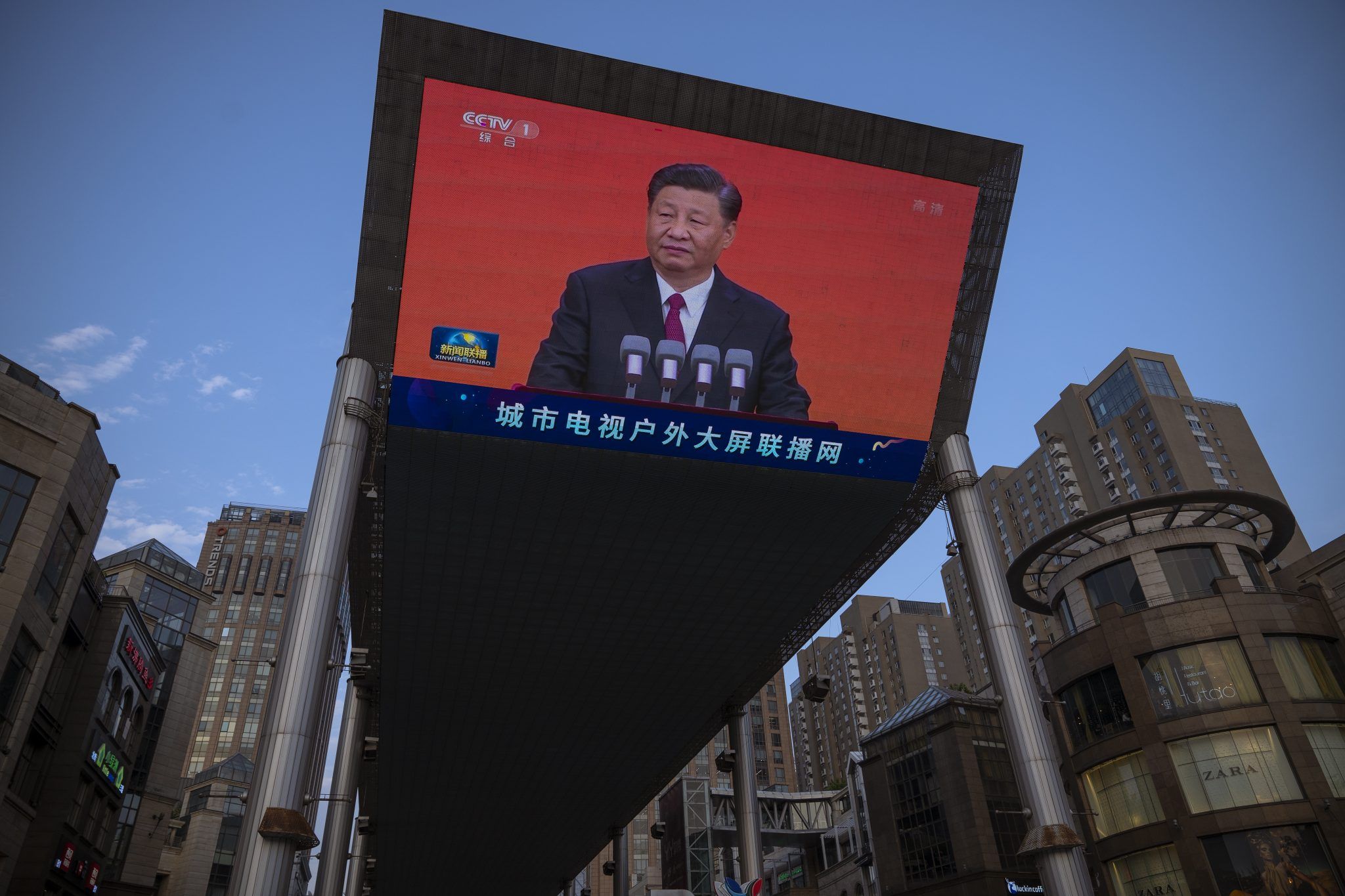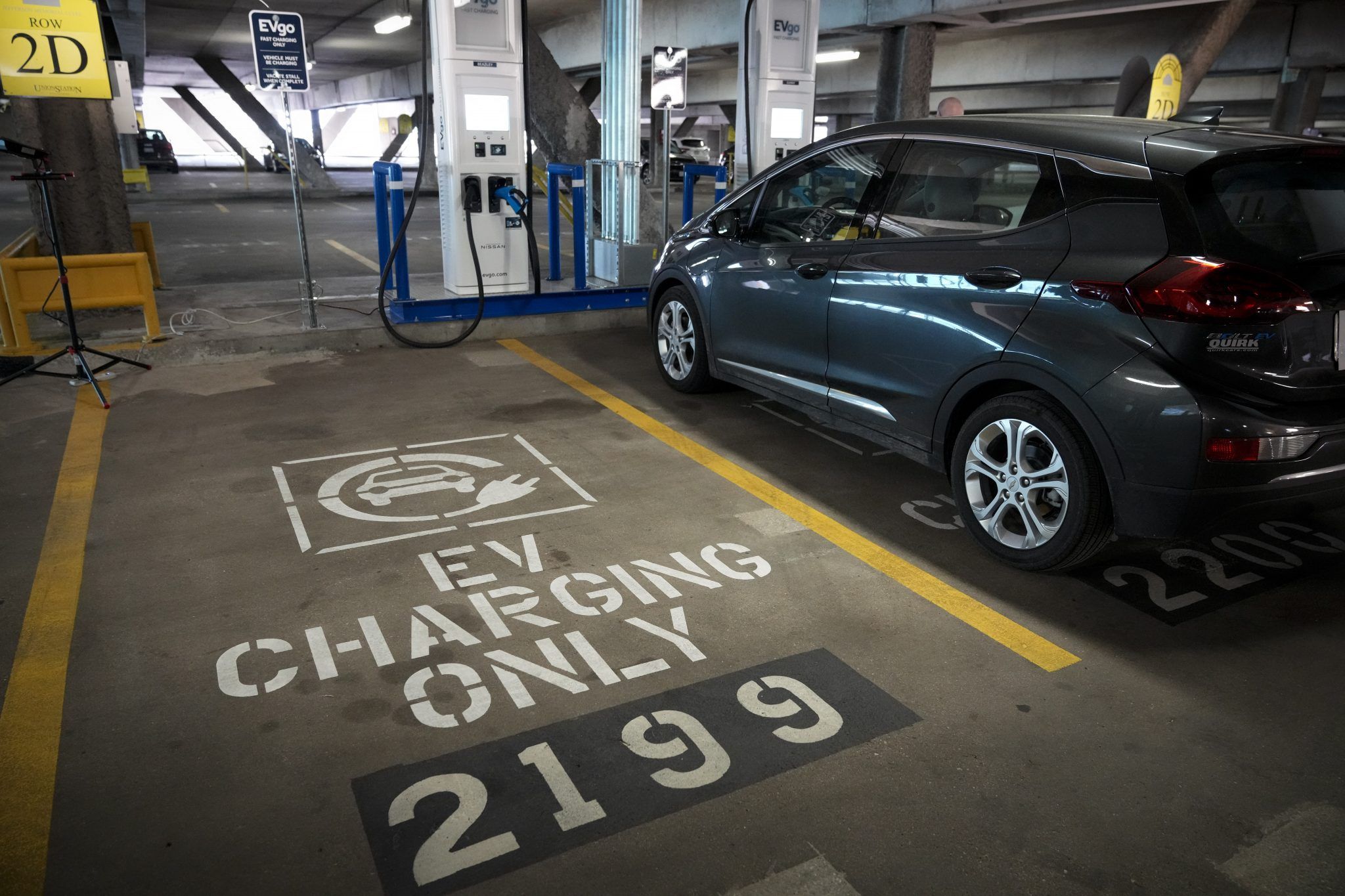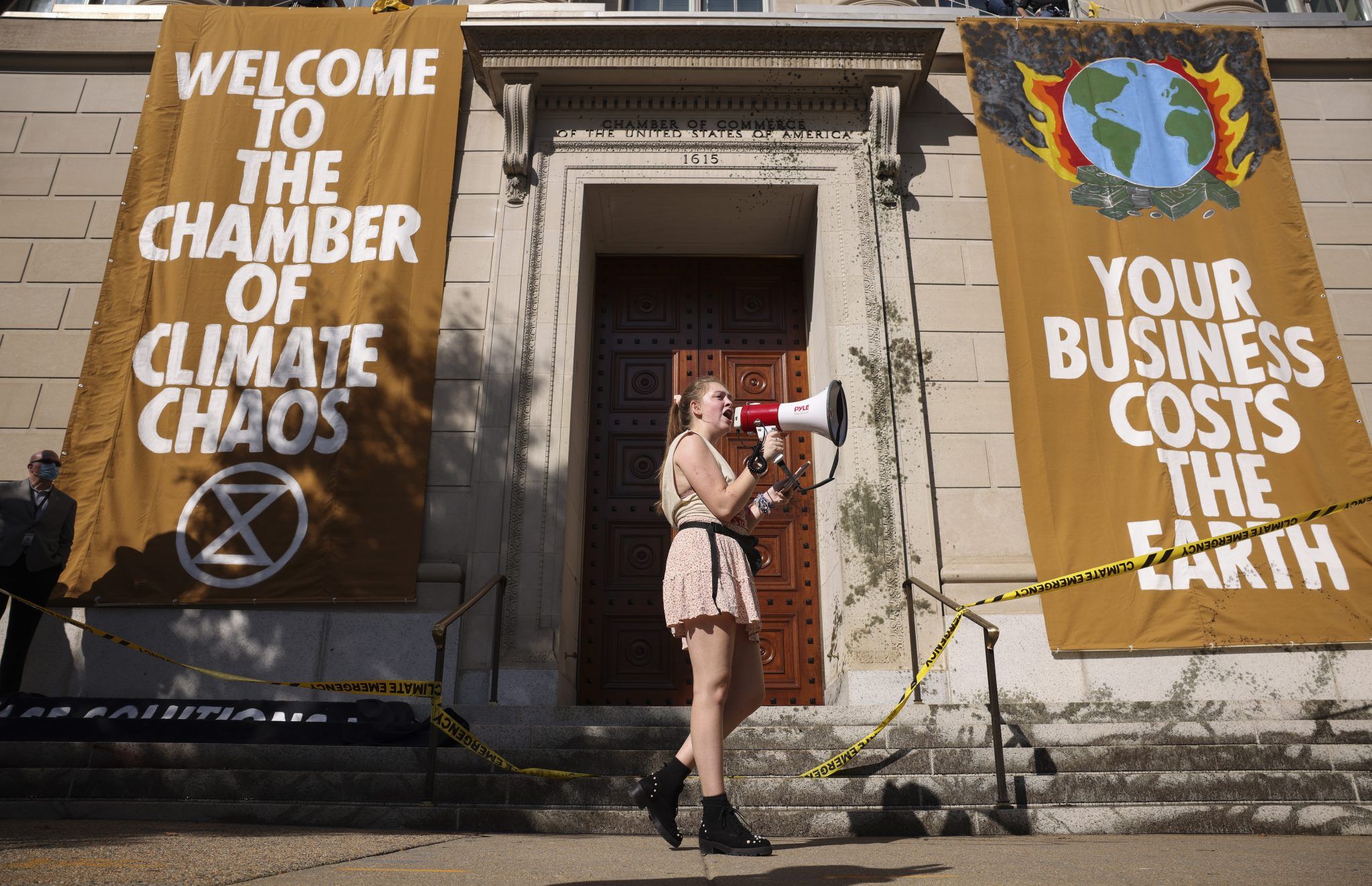Real change on the climate this time – or just another COP-out?
In less than a fortnight, a bunch of world leaders – bar the worst greenhouse gas offender on the planet – are gathering in Glasgow to stop the globe from becoming completely inhabitable.
Fittingly, they’re meeting on the scariest night of the year – Halloween October 31- to fight the most frightening climate predictions we’ve ever faced. We’re in a “code red” situation, the UN announced last month – a dire warning that you may have missed because it sounded like something you’d heard before.
Spoiler, you have (kind of) heard it all before, that’s why so many of you – 56 per cent of 16-25-year-olds – think the planet is totally doomed.
But the point now isn’t so much that the planet is a bit f*****, it’s that time is running out for us to do something about it.
So, will COP26 finally put a cap on the climate crisis? Seems unlikely – especially considering world leaders often meet about the climate but seldom meet targets. They also say a lot but really don’t do a lot. Even the Queen is becoming “irritated”.
“Build back better. Blah, blah, blah. Green economy. Blah blah blah. Net-zero by 2050. Blah, blah, blah,”… That’s how pint-sized eco-warrior, Greta Thunberg, parroted world leaders when she spoke at a Youth4Climate summit in Milan in late September, adding: “This is all we hear from our so-called leaders. Words that sound great but so far have not led to action. Our hopes and ambitions drown in their empty promises.”
So, are we headed for another climate cop-out in Glasgow? Here’s everything you need to know…
COP26 – what even is it?
Every year, the United Nations holds a climate change conference known as a COP – or ‘Conference of the Parties’ – to forge a global response to climate change. This year makes the 26th anniversary, hence COP26. It was postponed in November 2020 due to Covid.
Under the 1992 UN Framework Convention on Climate Change, every country is treaty-bound to “avoid dangerous climate change” and find ways to reduce greenhouse gas emissions globally and fairly.
The UK is leading this year and of course, bumbling PM Boris Johnson has been his usual bombastic, over-promising self, saying the summit will be “the turning point for humanity”.
The summit, held at the Scottish Exhibition Campus from Sunday October 31 until Friday November 12, is being billed as humanity’s last chance to avoid save the planet and will be led by the former business secretary, Alok Sharma.
Who’s going?
More than 120 world leaders (190 is rumoured to be the final figure) including US president Joe Biden and John Kerry, the US Special Presidential Envoy for Climate. It is expected to be the largest gathering of heads of state ever hosted in the UK.
Former US President Barack Obama will be there too, as will the Queen, Boris, Scottish First Minister Nicola Sturgeon, Sir David Attenborough and Pietro Parolin, the Cardinal Secretary of State of Vatican City – it was initially rumoured Pope Francis himself would attend.
World leaders will gather for the first few days, then leave their representatives to hammer out the fine print.
The talks are scheduled to end at 6pm on Friday November 12 but past summits have run into the weekend… which could be good news for Glasgow’s pizza delivery services.
Who’s not?
Chinese President Xi Jinping will not attend the summit in person. Naturally, this is prompting fears that China will refuse to set new climate change goals amid an energy crunch.
Given China is the world’s largest greenhouse gas emitter, this is a big deal and a major setback for Boris.
The leaders of India, Prime Minister Narendra Modi, and Saudi Arabia, Crown Prince Mohammed Bin Salman, are also not going.
While the absence of the three leaders is concerning, the bigger issue is that all three countries are yet to submit their updated carbon-cutting plans.
On Wednesday (October 20), Russian leader Vladimir Putin also confirmed he was snubbing the event.
What about Greta?
Greta is yet to RSVP – but given that she stole the show at COP25, it seems unlikely she won’t attend at some point.
The teenager arrived at the Milan event by boat. She’d been at sea for 20 days having rejected air travel because of the environmental impact.
She then went on to deliver a speech that struck at the very heart of the climate crisis – the inaction of world leaders to follow through with promises.
“Well I am telling you there is hope. I have seen it.
But it does not come from governments or corporations.
It comes from the people.”Here’s a small part from my speech today at the #cop25 in Madrid. pic.twitter.com/Dg8pz969yS
— Greta Thunberg (@GretaThunberg) December 11, 2019
Greta, whose solo climate strike in 2018 sparked a movement in millions of young climate protesters across the globe, told the BBC her decision depends on whether the event is “safe and democratic”. Greta wants to make sure those attending from poorer countries are fully vaccinated and able to travel.
If she does go, Greta will take the train.
Climate goals, what’s the cop?
The goal of COP26, according to the official conference website, is to secure global net-zero carbon emissions by 2050 and cap a global temperature rise at 1.5 degrees.
As part of that goal, 200 countries were asked ahead of the conference to come forward with “ambitious” 2030 emission reduction targets. That’s what China, India, and Saudi Arabia are dragging their heels on.
In 2015, leaders attending COP21 all agreed – in what is known as the Paris Agreement – to keep global warming “well below” 2C – and to try and aim for 1.5C – to avoid a climate catastrophe.
To deliver on the new targets, the website notes, countries will need to:
- Accelerate the phase-out of coal
- Curtail deforestation
- Speed up the switch to electric vehicles
- Encourage investment in renewables
The website further states that COP26 attendees need to adapt to protect communities and natural habitats; work together to “enable and encourage” countries affected by climate change to protect and restore ecosystems, build defences, warning systems and resilient infrastructure and agriculture, and to make good on cash promises to developed countries.
At COP26, world leaders also need to finalise the Paris Rulebook – the detailed rules that make the Paris Agreement operational.
The big one – stay below 1.5C… but didn’t we already agree that in 2015?
Well, yes, kind of.
While the Paris Agreement locked in the requirement to limit global rises to below 2C – and to try and find ways to limit it to 1.5C – the French built in a clause stipulating countries had to return to the table every five years with fresh plans to ensure the goal remained achievable.
The deadline was up on December 31 2020 but the pandemic prevented many countries from coming forward. COP26 now provides that chance and all countries are now being urged to show their hand.
To meet the Paris goals (which are legally binding), countries had agreed on non-binding national targets to cut – or in the case of developing countries, reduce greenhouse gas emissions – but they weren’t ambitious enough. In fact, if they were fulfilled Rachel Kennerley, a climate activist from Friends of the Earth, told JOE they would see the planet warm by between 2.4 and 2.9 degrees.
All countries are now being urged to revise their non-binding targets in line with the 1.5C target, an issue that Kennerley says is: “the most crucial thing for world leaders to look at”.
To meet that threshold, scientists estimate that emissions must be reduced by 45 per cent by 2030 – compared to 2010 levels – and to zero by 2050.
So, where are we with those early pledges?
As mentioned earlier China, India and Saudi Arabia are yet to file.
What’s more, according to a recent UN report, via The Guardian, current pledges, including those that have been newly submitted or revised by the US, EU, UK and more than 100 others, are still inadequate.
The newspaper notes that those pledges would result in a 16 per cent increase in emissions, far from the 45 per cent cut needed.
Sticking points?
Given G20 countries are responsible for about 80 per cent of global emissions, money is going to be a sticking point at COP26.
Developing countries – per head of population – pollute less but experience some of the worst impacts of climate change.
And they need money to help cut their emissions and compensation to help them cope with the damage already caused.
In 2009, wealthy nations agreed to help them out, pledging $100bn (£720m) a year by 2020 – but like everything else, the target, according to the UN, is not being met. Just $79.6bn was made available in 2019 – which is only 2 per cent more than the year before.
So, is COP26 actually going to achieve anything?
Greta isn’t holding her breath, in September she told The Guardian, “nothing has changed from previous years really”, adding: “The leaders will say we’ll do this and we’ll do this, and we will put our forces together and achieve this, and then they will do nothing.”
While saying COP26 is the “last best hope” for the world to get its act together, John Kerry, America’s climate envoy, told the BBC that key countries were pursuing policies that border on being “very dangerous” and in an earlier interview with The Times, he concluded that the talks would probably fall short of the target for cuts in coal and petroleum emissions needed to hold destructive levels of global warming at bay.
In a piece answering readers’ questions, the BBC painted a more hopeful picture.
Barring a complete collapse in the talks, the broadcaster said people could expect to see more countries announcing moves away from using coal for energy; a growing number of nations agreeing to curb methane emissions, and an agreement on moving towards electric cars and ending deforestation.
The BBC, however, warned: “Don’t expect to see too many overnight changes across the world as a result of these steps. They are all likely to have long lead-in times, with more flexibility on dates shown towards developing countries.”
On the big question of keeping the 1.5C temperature threshold within reach, it suggested: “a significant gap will remain even after Glasgow”.
Dr Aaron Thierry, a member of XR Scientists, a group of scientists that align themselves with the values and aims of Extinction Rebellion, suggested people be “realistic” around what the summit will achieve.
“This is COP26, the clue is in the name – we’ve had 26 of these,” he told JOE. “And all of that time we’ve had increases in CO2 emissions. The first one was in 1995 and more emissions of CO2 have been emitted since 1995 than in the entire history of humanity before then. If that’s what action looks like then you could say they’re irrelevant.”
Business as usual then.
Related links:
- Woman starts driving over Insulate Britain protestor in furious standoff
- Queen filmed secretly slamming ‘irritating’ politicians who are ‘all talk’ on climate change
- Boris Johnson’s holiday villa ‘linked to offshore tax havens’, according to reports
RELATED ARTICLES






MORE FROM JOE



















MORE FROM JOE



























